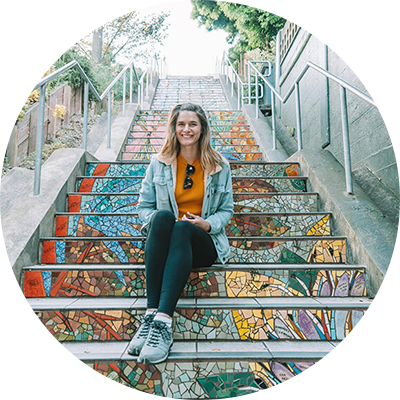TL;DR: The key takeaways from my Redwood National Park guide are:
- Highway 101 is the easiest way to get to Redwood National Park, but the scenic route on Highway 1 is worth it if you have the time.
- Some of the popular trails, like the prehistoric-looking Fern Canyon hike, are very popular—so apply for your hiking permits early.
- Visiting during summer or fall is best, with later visits meaning less crowds.
Wandering through ancient redwood groves is both a humbling and uplifting experience.
Coastal redwoods can live to be 2,000 years old and grow as tall as a 30-story skyscraper, which can make you feel pretty puny in comparison.
But in a fast-paced world, it’s comforting to be in a place that has remained unchanged for millennia.
Redwood National and State Parks, the collection of redwood preserves located in the misty far north of California, hoards 45% of the world’s old-growth redwoods.
These trees are unique to California and one of the state’s finest natural treasures.
Hiking among these venerable giants is an unmissable California experience, and Redwood National and State Parks is the best place to do it.
However, there’s more to this remote region than hiking. There are pristine beaches to explore, wild rivers to raft, and the legend of Bigfoot to discover.
Add Redwood National and State Parks to your bucket list right now and read on for the ultimate guide to this magical place.
Note: this article contains affiliate links, which help run this site at no extra cost to you so I can keep providing free travel advice and tips.
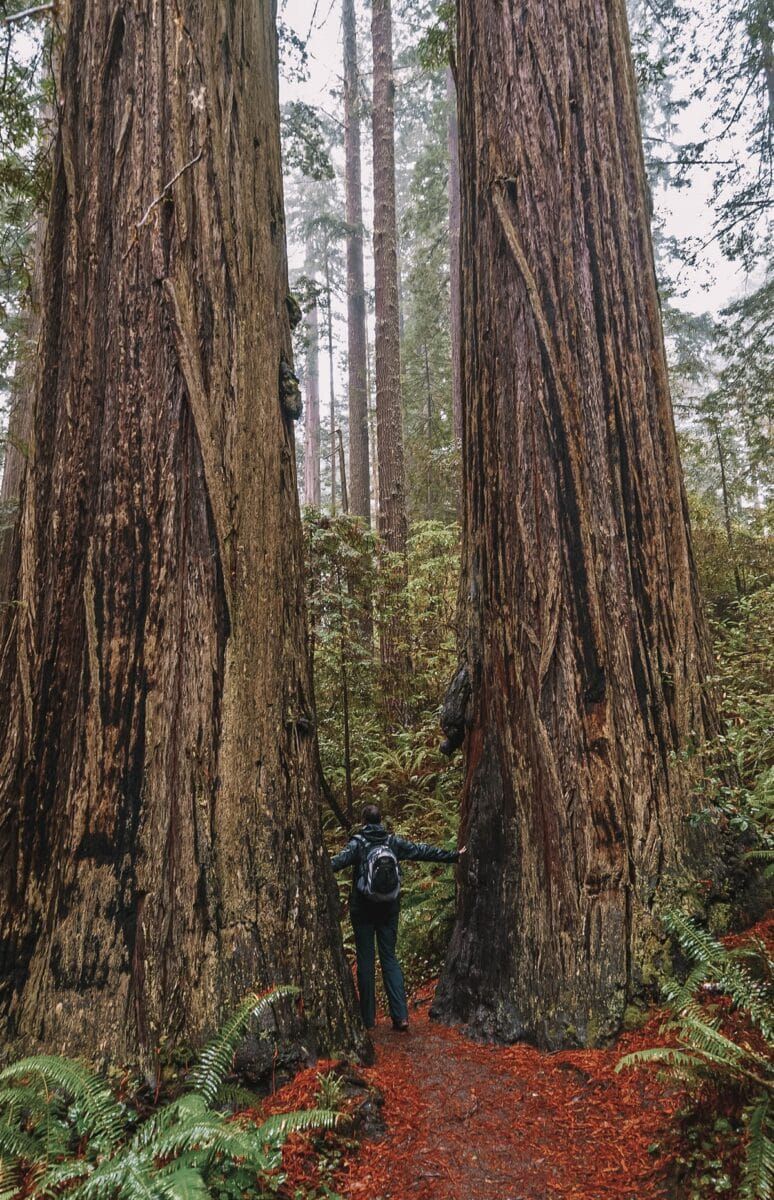
Practical Info
Address: Thomas H. Kuchel Visitor Center, US-101 & Redwood Hwy, US-101, Orick, CA 95555
Entrance fee: Redwood National Park is free to enter. Parking at some of the trailheads at the state parks within Redwood National and State Parks incur day use fees of $12. Fees are waived with an America the Beautiful Pass.
Year established: 1968
Size: 131,983 acres
Annual visitors: 435,879 in 2021
Redwood National Park hours: Open daily, year-round
Phone numbers: (707) 464-6101
Redwood National Park History
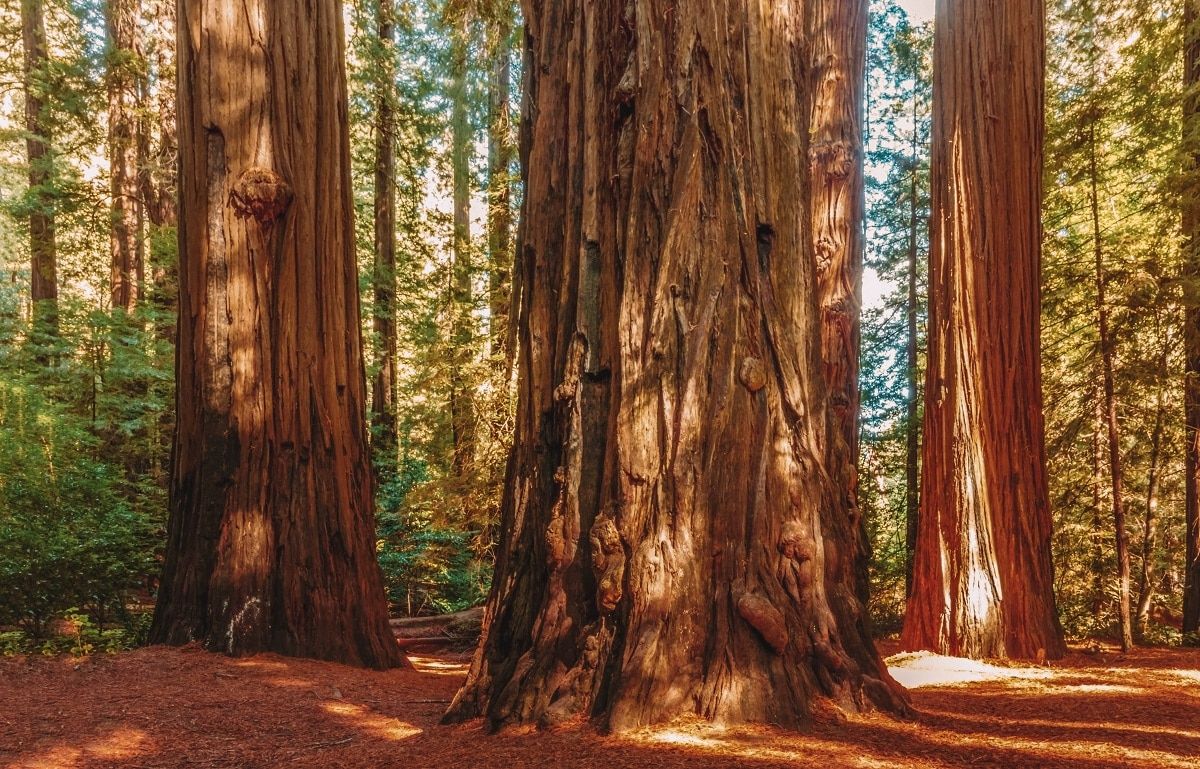
As long as there have been humans in California, redwood trees have been treasured.
However, their value has been perceived in very different ways over the years–and almost led to the complete destruction of the coastal redwood forests.
While the trees themselves date back to the Jurassic period, human activity in the area began around 3,000 years ago.
Indigenous Americans settled in the region, founding villages along the coast. There was no dominant tribe, but rather a network of separate communities with social, economic, and religious ties.
Typically, people in the region used the redwood trees to build their homes and hunted the deer, elk, and fish found throughout the area.
They believed an ancient, divine spirit lived within the trees. At this time, old-growth redwood groves covered two million acres of Northern California coastline, from the Oregon border to Big Sur.
The first European known to thoroughly investigate the lands in this area was Jedediah Smith, in 1928.
However, little interest was shown in this dense, hard-to-reach region until 1850, when gold was discovered at Trinity River.
The surge of Euro-Americans seeking their fortune drove the original inhabitants from their homes as they started taking the land for their settlements.
Lumber was required in great quantities to house all these new people and soon the logging industry moved in. During this time, most of the Indigenous Americans had been forcibly removed from their villages.
Redwood timber was highly prized for its strength, beauty, and insect-resistant properties. It was also thought to be fire-proof, which sent demand into overdrive after the 1906 earthquake and subsequent fires that devastated San Francisco.
By 1910, the two million acres had been reduced to a few hundred thousand.
A group of concerned citizens formed the Save the Redwoods League and raised funds to buy what was left of old-growth groves in the far north of California.
These lands became Jedediah Smith Redwoods State Park, Del Norte Coast Redwoods State Park, and Prairie Creek Redwoods State Park.
However, logging in the surrounding areas continued, and with motorized engines replacing traditional methods, the scale of destruction increased sharply.
Environmental activists in the 1960s fought back, lobbying for more land to be preserved and convinced Congress to create a new national park in the area.
In 1968, Redwood National Park was established, securing the redwoods in Lady Bird Johnson Grove, those on the Trillium Falls Trail, and the Tall Trees Grove.
More land was purchased by the government 10 years later, which the park service has since been working to restore.
In 1994, all four parks were combined, and are now jointly administered by the NPS and California State Parks.
Today, only 5% of the old-growth coastal redwood forest remains–most of it located within Redwood National and State Parks.
Some descendants of the original tribes who lived in Redwood National State Park still live within the park and have a large role in the preservation of the redwood groves.
Facts About Redwood National Park
- It’s home to Hyperion, the tallest tree on the planet, whose location is kept secret by park rangers.
- Redwood National Park has the largest remaining old-growth redwood forest in the world–almost half of all old-growth redwoods grow here.
- Logging had already wiped out almost all two million acres of coastal redwood forests in California by 1968 when Redwood National Park was established.
- Redwood National Park was designated a UNESCO World Heritage Site in 1980.
- Jurassic Park: The Lost World was filmed here.
- Redwood trees are the only trees that can absorb water through their leaves, as well as their roots. It’s how they’re able to grow so tall.
What is Redwood National Park Most Well-Known For?
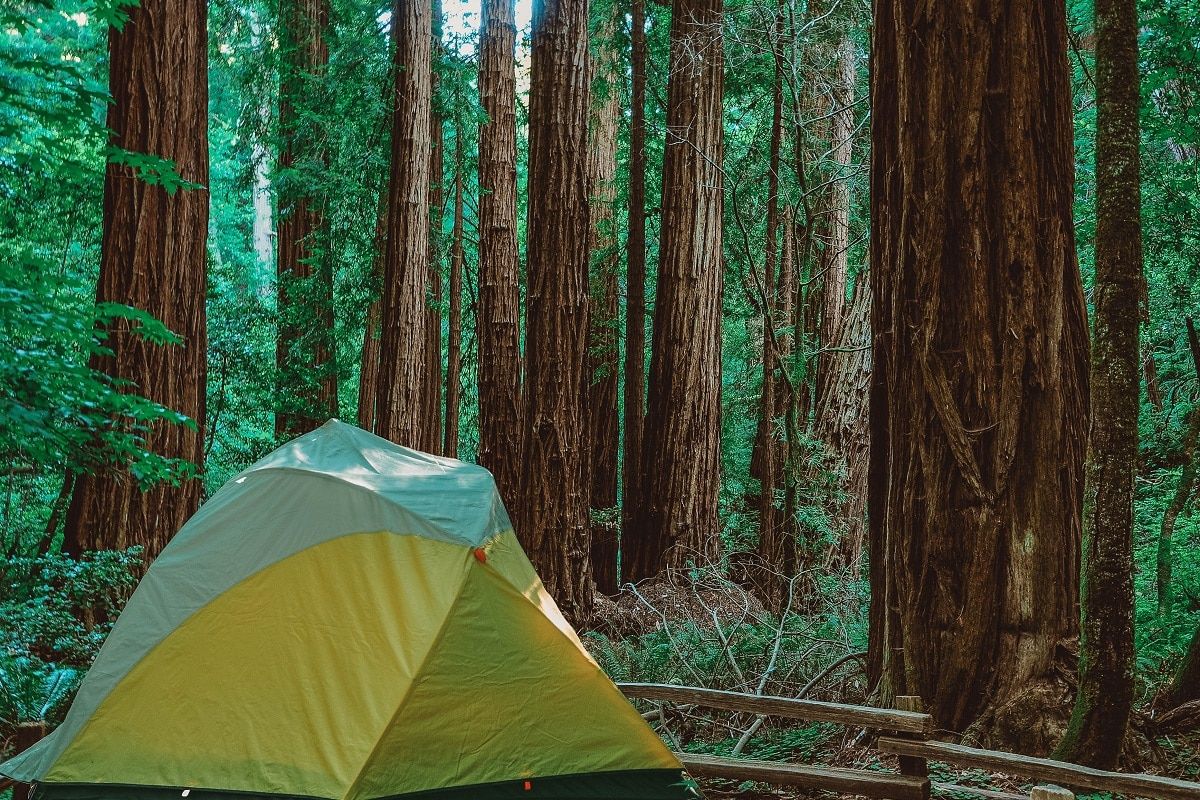
Redwood National Park is best known for its old-growth coastal redwoods. Half of all remaining old-growth redwoods are within the boundaries of Redwood National and State Parks.
If you want to walk or drive for miles through ancient redwood forests, this park should be on your bucket list.
Redwood National and State Parks is also home to the world’s tallest tree, Hyperion. At 380.81 feet, it’s the tallest of the world’s three trillion trees.
National Park rangers prefer not to advertise the tree’s location, to keep this special tree safe from over-tourism (redwood roots are shallow and can be easily damaged simply by walking over them).
You won’t find it on any park map, or easily accessible from a trail. Instructions on how to hike out to Hyperion can be found on the internet.
With that said, I wouldn’t recommend straying from the trails. Getting lost or hurting yourself is a real danger in such a remote park.
Hollywood has also been inspired by the otherworldly beauty of the redwoods, and several movies have been filmed in or around the parks.
If you’re a Star Wars fan, keep an eye out for familiar spots: it’s said that some of the forest scenes from Return of the Jedi were filmed here.
Outbreak, the 1994 movie about a deadly virus, was filmed in the nearby town of Ferndale, and the forest scenes for Jurassic Park: The Lost World were captured here.
The redwoods are also home to mythical creatures, as well as fictional ones. The legend of Bigfoot took hold in this area, and a local industry has grown up around the hairy humanoid.
Sightings have been recorded in Jedediah Smith Redwoods State Park and in the forests nearby.
If you’re curious, make a trip to nearby Willow Creek, which has a Bigfoot museum. Or if you’re brave, go camping in one of the backcountry sites and watch out for unusually large footprints.
Aside from the redwoods, Redwood National Park has beaches, cliffs, meadows, elk, wildflowers, and the Smith River.
How Many Days do you Need in Redwood National Park?
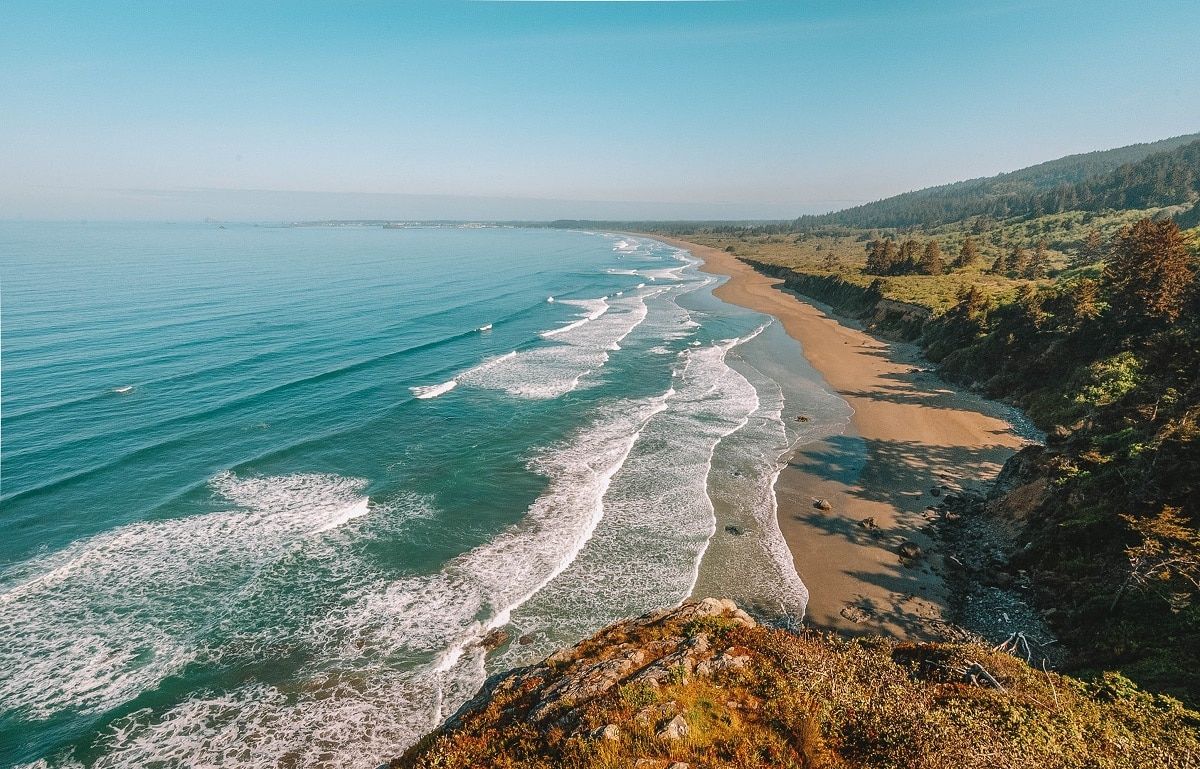
Redwood National Park is big, stretching across 50 miles of coastline on slow, winding roads. There are hikes, scenic drives, rivers to kayak, beaches to explore, and ranger tours to take.
Give yourself 2-3 days to explore Redwood National Park and consider staying longer to check out the surrounding state parks.
Other parks that are very much worth a visit include Humboldt Redwoods State Park, Richardson Grove State Park, and Sue-meg State Park.
How Big is Redwood National Park?
Redwood National and State Parks is made up of four separate parks adjacent to one another.
In total, Redwood National and State Parks has 131,983 acres within its boundaries, and is about 60 miles long, north to south.
It takes about one hour to drive from the southern entrance to the northern border on the 101.
Where is Redwood National Park?
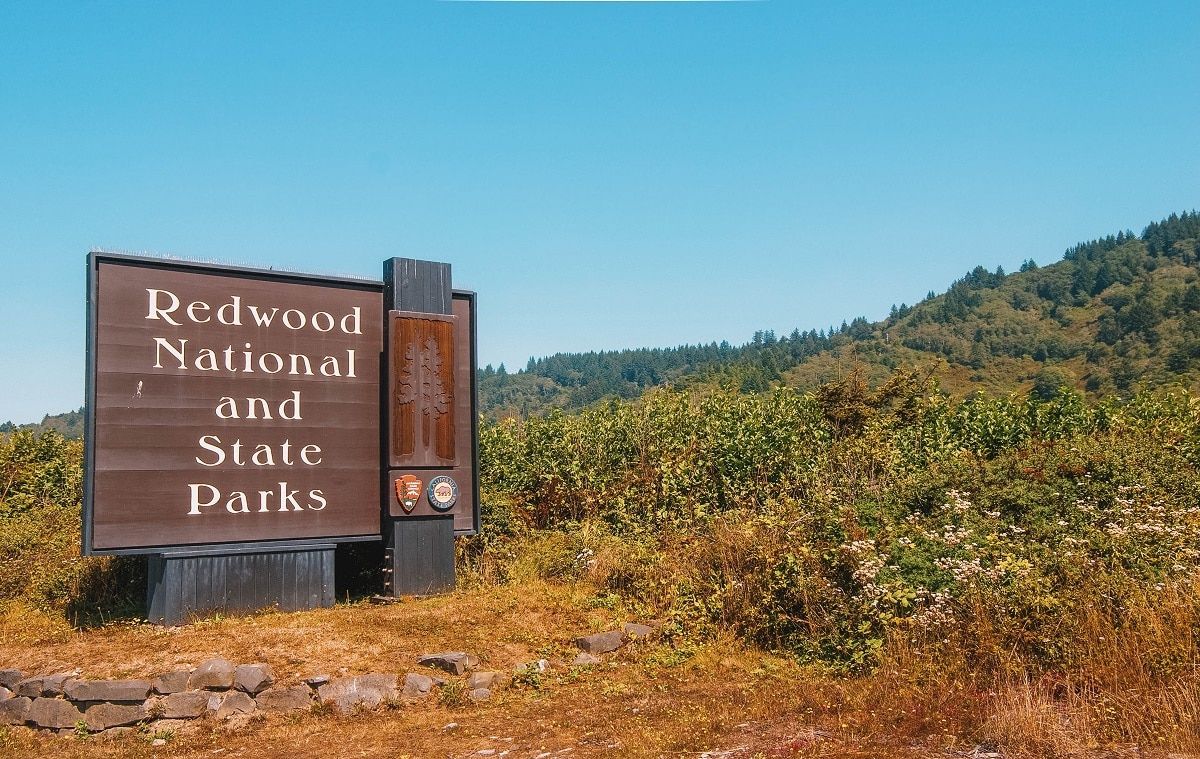
Redwood National Park is located in the far north of coastal California, just below the border with Oregon. It’s about a six-hour drive from San Francisco, or a five-and-a-half-hour drive from Portland, Oregon.
From the north, Crescent City is the nearest large city, located five miles away from the park’s northern boundary.
At the southern end, the cities of McKinleyville and Arcata are a 30-minute drive from the south entrance.
How to Get to Redwood National Park
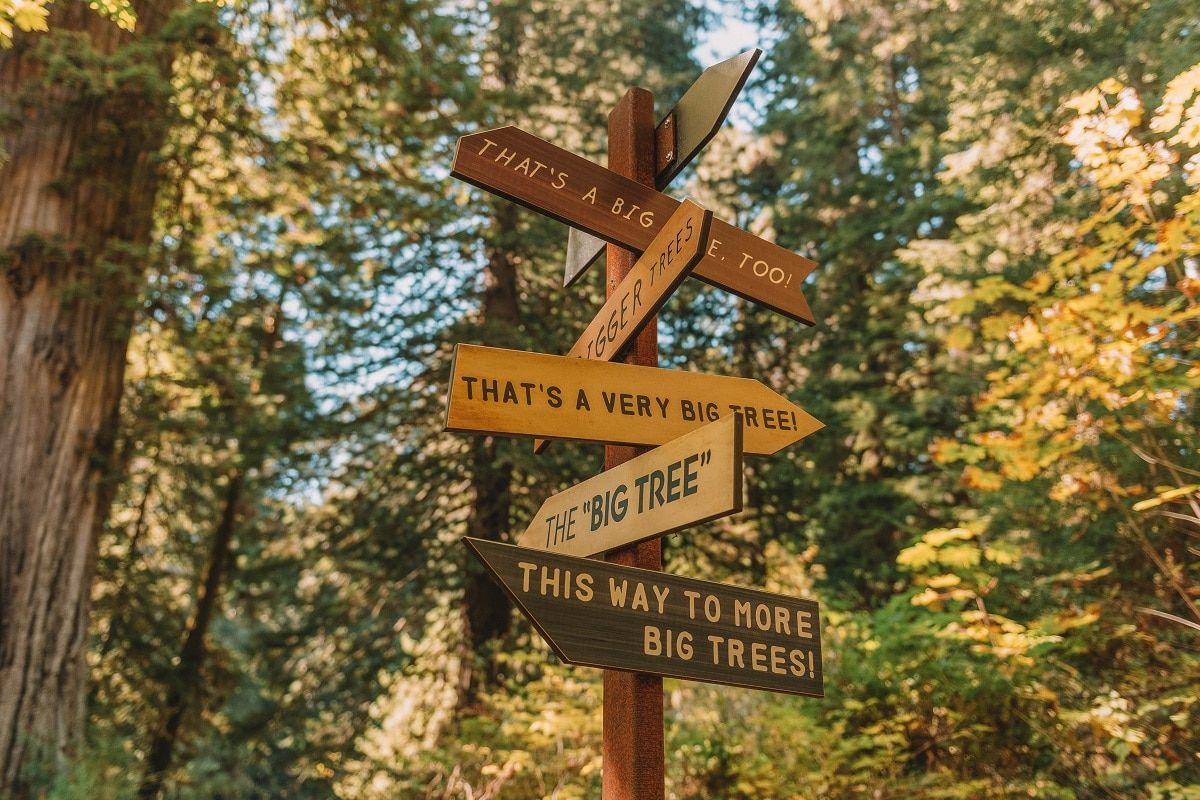
Closest Airports to Redwood National Park
Arcata-Eureka Airport (ACV) is the closest regional airport, with flights operated by United Airlines, American Airlines, and Avelo, a 30-minute drive away from Redwood National Park.
An alternative regional airport is Redding Airport, just under a four-hour drive away.
Alaska Airlines, United Airlines, and Avelo Airlines service this airport, with direct flights available to San Francisco, Los Angeles, Las Vegas, Seattle, and Burbank.
Redding Airport is also close to Lassen Volcanic National Park, so this would be a great option if you wanted to see both parks in one trip.
San Francisco International Airport (SFO), Oakland International Airport (OAK), and Sacramento International Airport (SMF) are all a six-hour drive south of the parks.
Sacramento Airport (SMF) is a smaller international airport with non-stop flights to cities across North America.
Driving to Redwood National Park
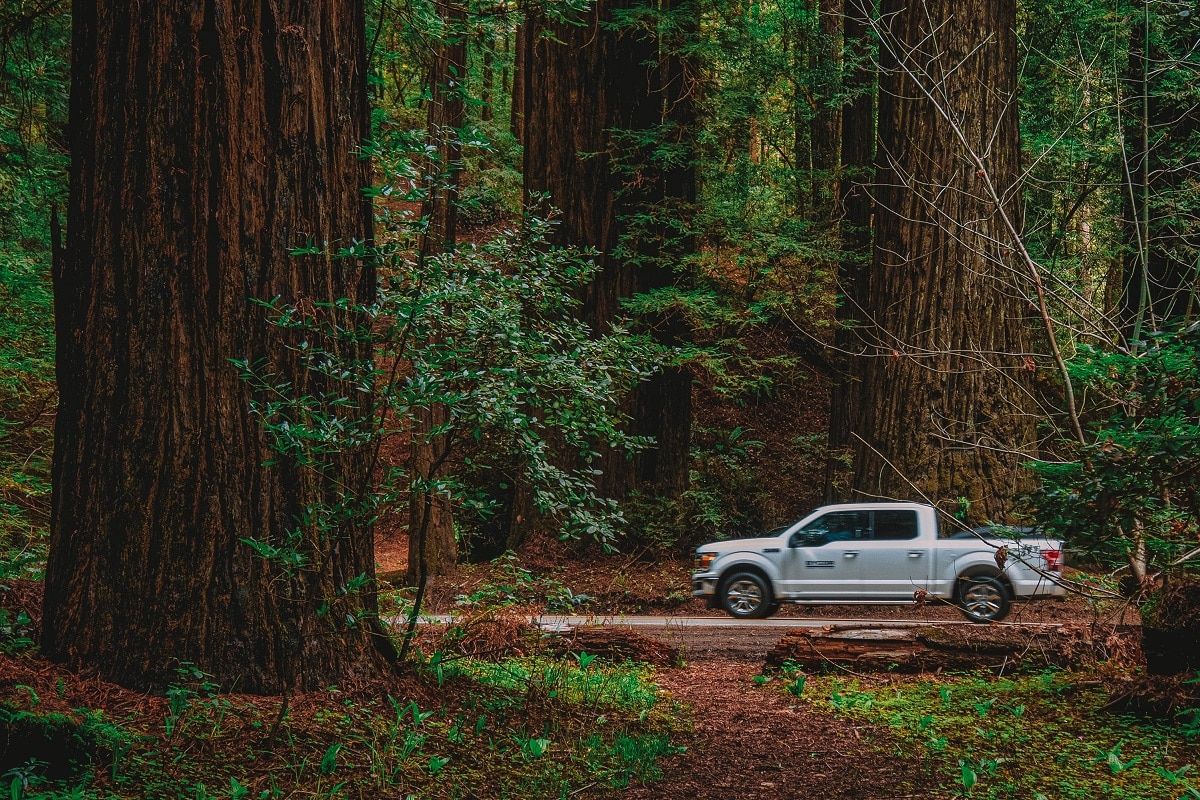
Driving from the South: San Francisco to Redwood National Park
My favorite way to visit the redwoods is on a road trip.
Don’t be in a hurry, or you’ll miss some of the best parts of Northern California. Visiting weird roadside attractions and staying overnight at sketchy motels are all part of the fun.
Healdsburg
From San Francisco, pick up a rental car from the airport or the city and drive north on Highway 101 for 90 minutes toward Healdsburg.
Healdsburg is one of the top wine destinations in Sonoma County, and the perfect place to indulge in a wine tasting, relax at a spa, or browse the boutiques and antique stores downtown.
Humboldt Redwoods State Park & Ferndale
After visiting Healdsburg, it’s a 2.5-hour drive up to Humboldt Redwoods State Park on Highway 101.
Or, it’s a four-hour drive if you take the coastal route through Mendocino on the beautiful Highway 1 (aka the Pacific Coast Highway)
Humboldt State Park is worth a stop for the famous scenic drive, the Avenue of the Giants, plus there are some great trails through the old-growth redwood forest.
Make a quick detour to the charming Victorian town of Ferndale before heading north on Highway 101 again.
Mckinleyville or Arcata
Make a stop in McKinleyville or Arcata, a 45-minute drive north, to pick up supplies before making the 30-minute journey to the entrance of Redwood National Park.
Driving from the East: Redding or Sacramento to Redwood National Park
From Redding, take Highway 299 for three hours and 40 minutes to Redwood National Park.
It’s a scenic drive through mountains and forest, following the trail beaten by miners heading out to seek their fortune in the Trinity goldfields.
Weaverville
Make a stop at Weaverville, a charming Old West town about an hour west of Redding.
Since most of the town’s 1850s buildings were constructed from brick instead of wood, it has survived wildfires better than most California gold-rush era communities.
Willow Creek
After driving another hour, stop again at Willow Creek, the tiny mountain community at the heart of the Bigfoot legend.
Check out the Willow Creek China Flat Museum for Bigfoot artifacts and take a photo next to the 25-foot Bigfoot sculpture outside.
Continue along the 399 until you hit Highway 101, then keep going north. It’s about one hour’s drive from Willow Creek to Redwood National Park.
Driving from the North: Oregon Border to Redwood National Park
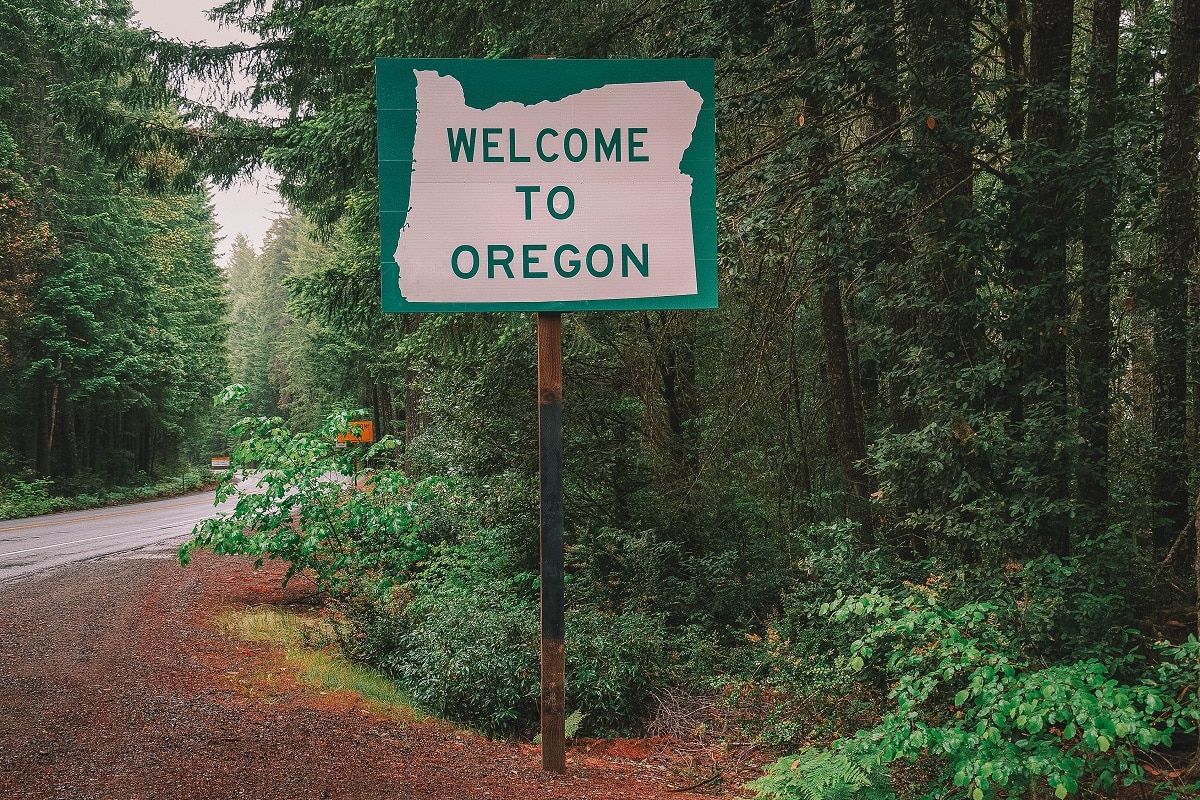
From the Oregon border, it’s an hour and twenty minutes drive to Redwood National Park.
Crescent City
Crescent City is the first big city along the way, about 30 minutes south of the state line.
Crescent City is a pleasant seaside town, with restaurants, cafes, and hotels, making it a great base for a Redwood National Park trip.
While you’re there, check out the beach, the lighthouse, the harbor, and the Smith River, which is fun to raft in the summer months.
Jedidiah Smith State Park & Del Norte Coast State Park
Just outside of Crescent City is Jedediah Smith Redwoods State Park, one of the state parks included in Redwood National and State Parks. This is where you’ll find the Boy Scout Trail.
A further 15 minutes’ drive south on Highway 101 is Del Norte Coast Redwoods State Park, another of the three state parks within the group. This is where redwoods meet the sea, with eight miles of rugged coastline.
Klamath
Next up is Klamath, where you’ll find the delightfully odd Trees of Mystery with a fun aerial tram ride through the canopy and nice trails through the trees.
Prairie Creek State Park
After Klamath, you’ll find Prairie Creek State Park, the final state park before Redwood National Park. This is the location for Gold Bluffs Beach and Fern Canyon.
Finally, Redwood National Park is located five minutes away at Orick.
Driving from Yosemite to Redwood National Park
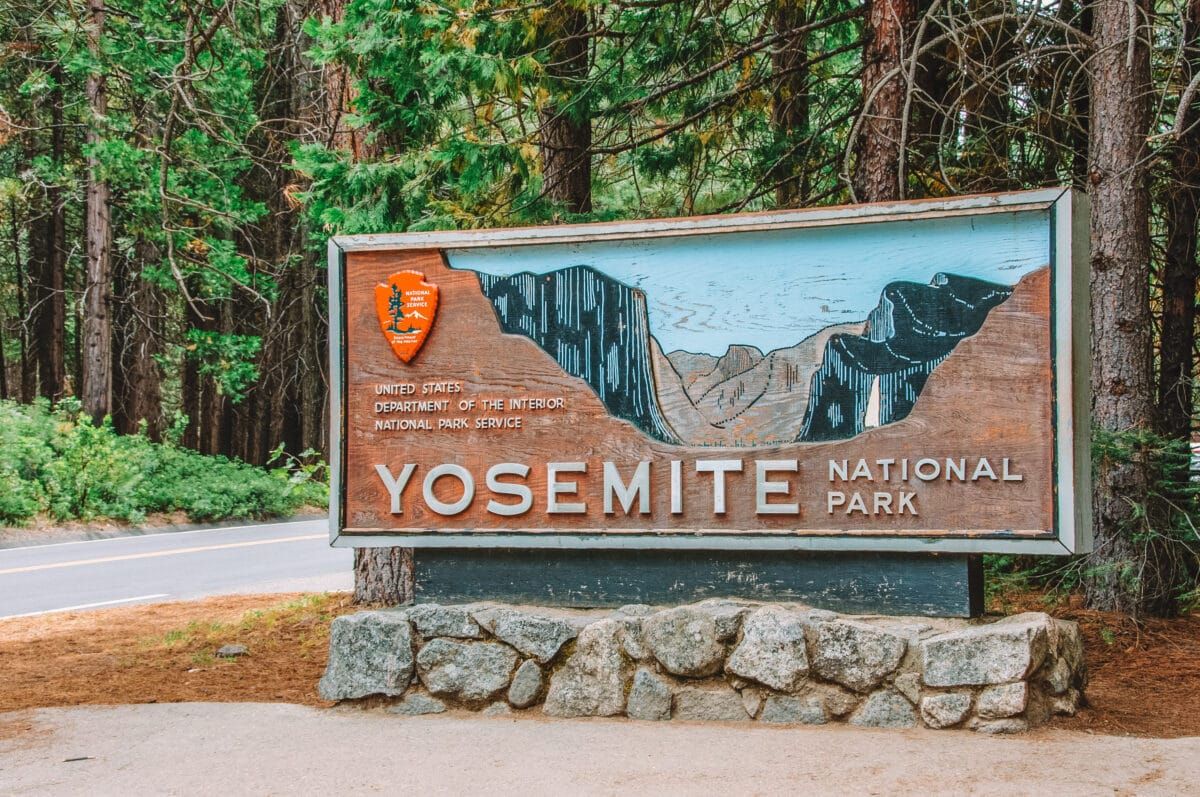
National Park road trip! If you want to see two of California’s most iconic national parks, combine Yosemite and Redwoods into one trip.
You’ll see waterfalls, mountains, lakes, meadows, and forests, and you’ll probably use the word “majestic” a lot.
If you’re looking for an even more epic trip, you can check out our detailed California national park road trip guide.
Start from San Francisco and drive four hours east to Yosemite National Park. I’d suggest at least three days here to enjoy the highlights of Yosemite.
After Yosemite, drive back the same route to San Francisco, then take Highway 101 north and follow the San Francisco to Redwood National Park directions.
This adds up to a total of 14 hours of drive time, and I’d suggest 7-10 days for this trip.
More Time?
If you have more than a week, you’ll have time to see Lassen Volcanic National Park too.
For this trip, start from San Francisco and head to Yosemite first, then after a few days in the park, go to Sacramento. This will take a little over two-and-a-half hours.
After seeing the sights in California’s capital, continue north on Route 99, then Route 32 to get to Lassen Volcanic National Park.
It’s a four-hour drive to Lassen, which has caves, lakes, and trails across a stunning hydrothermal landscape.
If you enjoyed the waterfalls of Yosemite, you’ll love nearby McArthur-Burney Falls, one of the most spectacular waterfalls in California.
From Lassen Volcanic National Park, turn west toward Redding, then follow the suggested itinerary from Redding to get to Redwood National Park. You could do this final stretch in four hours.
Complete the loop back to San Francisco by reversing the San Francisco to Redwood National Park route above by driving south on Highway 101 for an epic Northern California road trip.
You could do this in ten days but 14 would give you more time for stops.
Public Transit to Redwood National Park
Taking a Greyhound bus is the best option for public transit. It takes about eight hours to get to Arcata bus station. Then, hop on a local bus to get to the park entrances.
If you don’t want to drive, another option is to take a tour. This three-day guided tour picks you up from San Francisco, provides all transportation, and includes hotel accommodation.
How to Get Around Redwood National Park Once You Arrive
Unfortunately, there’s no shuttle service within Redwood National Park. Driving is the best way to get around.
You can rent a car from nearby Arcata Airport, bring your own, or join an organized Redwood National Park tour.
Alternatively, you could get around by cycling. Redwood National Park has many great biking trails through the forest. If you don’t have your own bicycle, you can rent one from Wildtrail Tours in Arcata.
Driving in Redwood National Park
Although the park is large and spread out along the coast, most of the trailheads are easily accessible from Highway 101.
Roads within the parks are in great condition and can easily accommodate trailers or RVs. There are also some great scenic drives in the area.
Check out the Newton B. Drury Scenic Parkway, a ten-mile paved alternative to Highway 101. This is the place to slow down and pull over to appreciate the towering redwoods.
Or, if you don’t mind getting dirt on your tires, Howland Hill is an amazing stretch of narrow, unpaved road where you can get extraordinarily close to old-growth redwoods.
Gas Stations in Redwood National Park
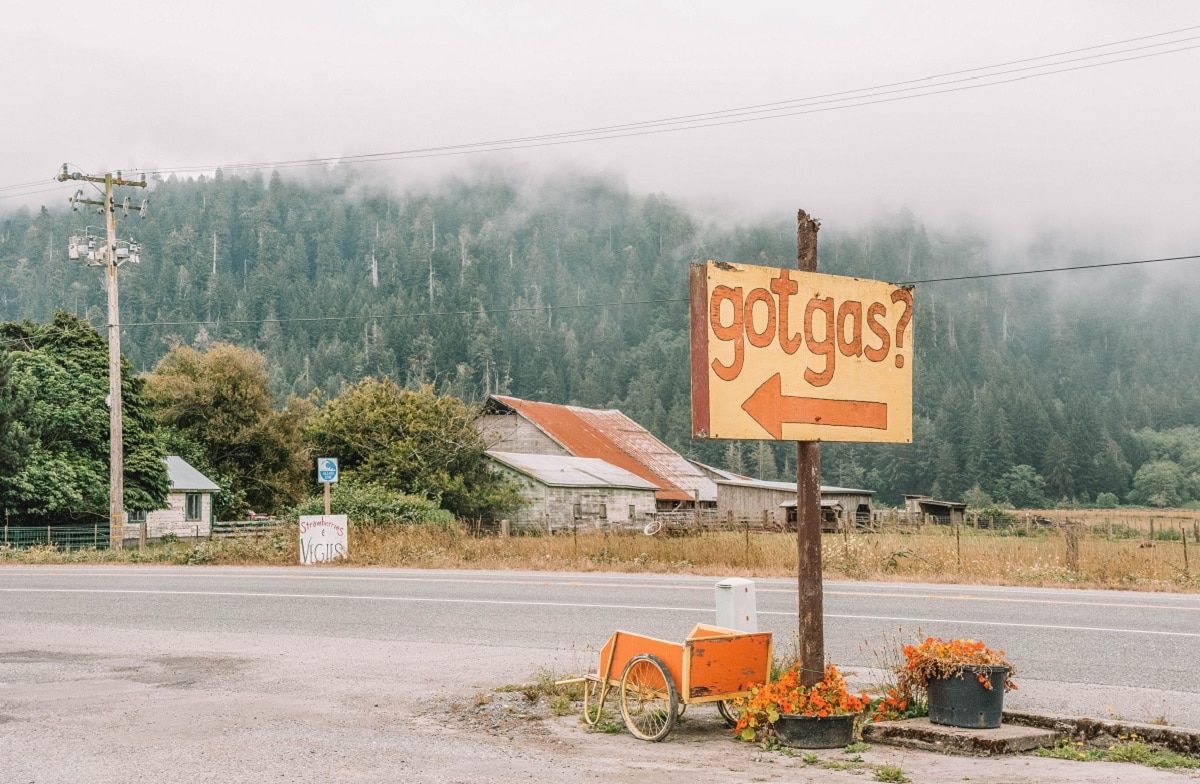
There are no gas stations in Redwood National Park – I advise fueling up in Crescent City on the north side or Arcata to the south. There’s also a small gas station in Orick, in between Redwood National Park and the state parks.
The closest gas stations to Redwood National Park are at 120025 US-101, Orick, CA 95555 and 101 Main St, Trinidad, CA 95570.
State Parks in Redwood National Park
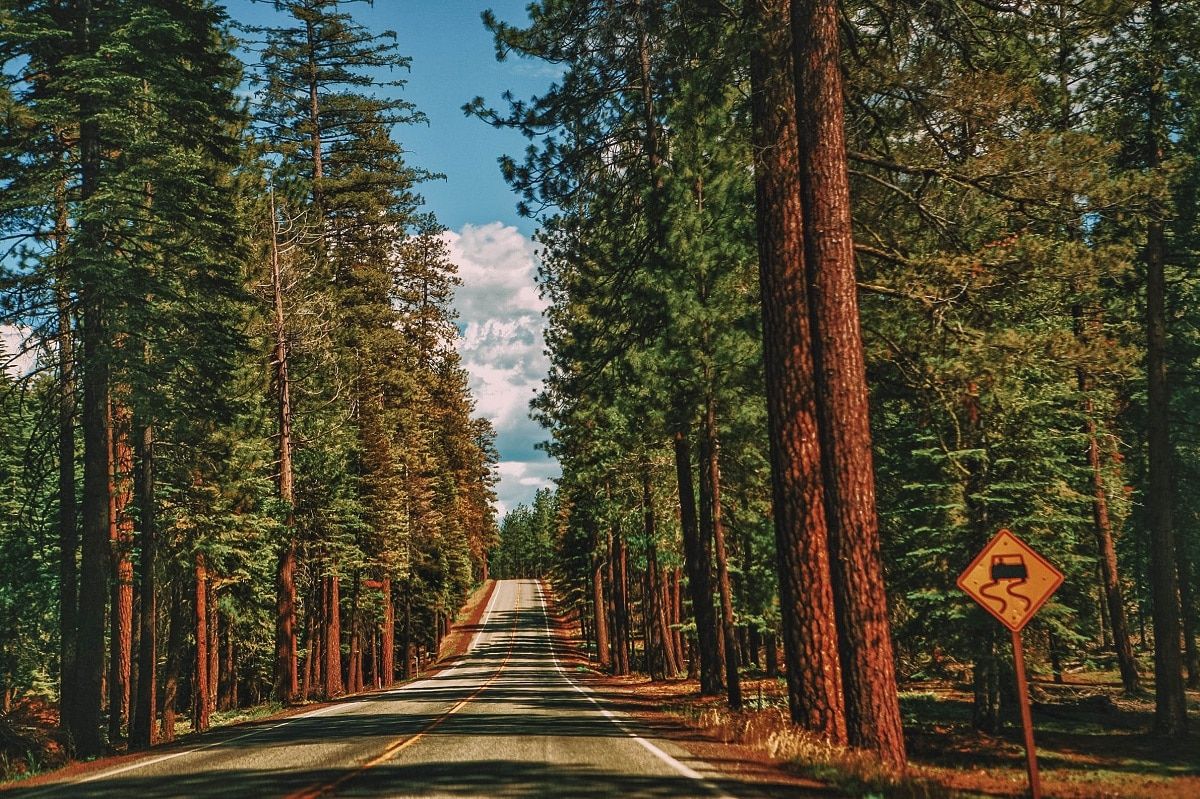
Redwood National and State Parks is unique among the country’s national parks because it’s made up of three state parks, plus Redwood National Park.
This patchwork approach developed as environmental activists pushed Congress to acknowledge that the ecological value of old-growth redwood trees outweighed their economic value over several decades.
Initially, the Save the Redwoods League secured the groves in Jedediah Smith State Park, Del Norte Coast State Park, and Prairie Creek Redwoods State Park in 1910. However, logging continued in the forest outside the preserves.
The battle continued into the 1960s when Redwood National Park was established, and the nearby state parks were rolled into the new national park. Collectively, these parks are known as Redwood National and State Parks.
As a result, these are the only California state parks you can visit using an America the Beautiful National Park Pass, which I highly recommend you buy in advance of your trip.
From south to north, you’ll drive through Redwood National Park first. From there, Prairie Creek Redwoods State Park, followed by Del Norte Coast Redwoods State Park, and finally, Jedediah Smith Redwoods State Park.
Here’s a look at each of the state parks.
Prairie Creek Redwoods State Park
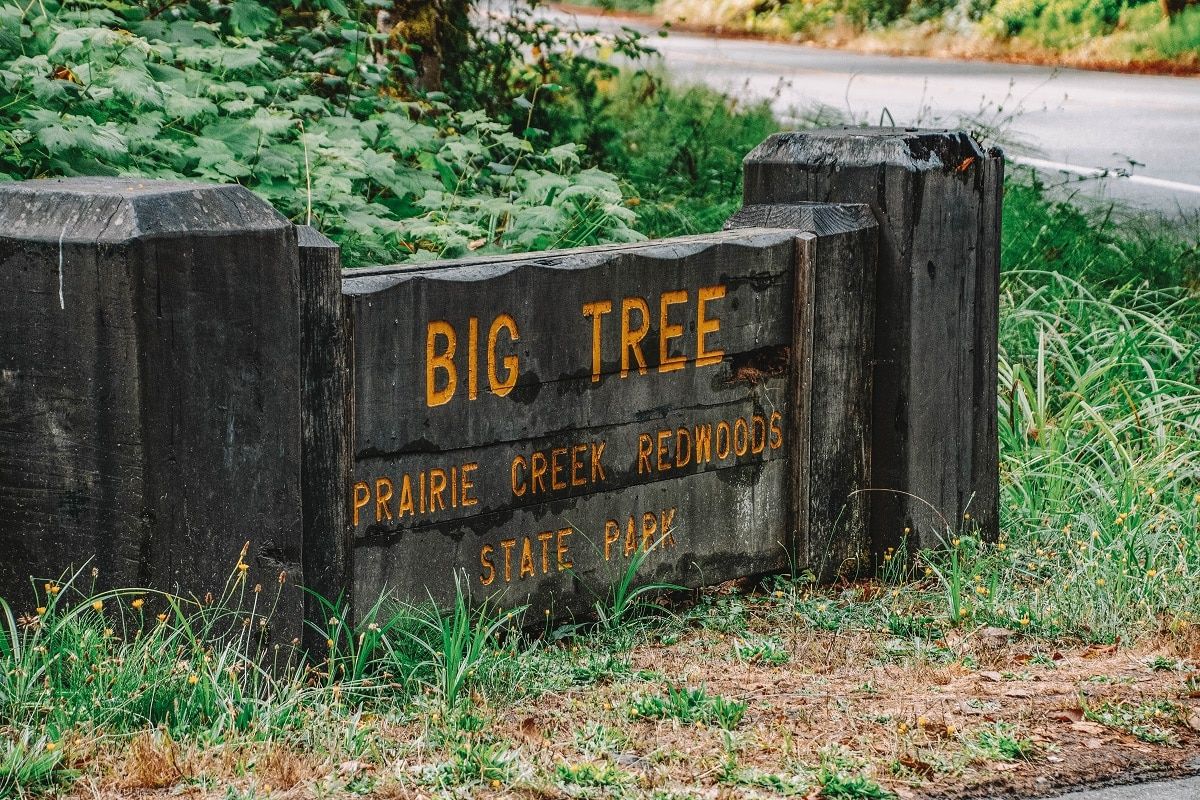
This park is located on Newton B. Drury Scenic Parkway off Highway 101, with the visitor center at the southern end.
Prairie Creek is sandwiched between Redwood National Park to the south and Del Norte Coast State Park to the north.
Prairie Creek Redwoods State Park is best known for the scenic parkway, Gold Bluffs Beach, and Fern Canyon. Camping is available at Gold Bluffs Beach, accessed from Davison Road.
The Newton B. Drury Scenic Byway is a ten-mile stretch of road running alongside Highway 101, where you can slow down to appreciate the redwoods.
Between October and May, the road is closed to motorized traffic on the first Saturday of the month for its “Hike and Bike Days”.
Fern Canyon is a must-do hike along a stream, through a lush, green canyon blanketed in ferns.
It’s like stepping through a portal into a prehistoric past, a fact not lost on the producers of the Jurassic Park movie sequel, part of which was filmed in this location.
The one-mile trail is also massively popular. So much so that the National Park Service now limits access from May to September with a permit system.
You can book your free Fern Canyon permit here in advance of your trip, or make a reservation at Gold Bluffs Beach Campground. Day-use fees are payable at the trailhead unless you have a pass.
In addition to the beach and the forest, there are meadows with grazing Roosevelt elk.
These are the largest variety of elk in North America. They were nearly hunted to extinction before President Theodore Roosevelt stepped in to preserve the species, which were subsequently named for him.
Prairie Creek Redwoods State Park has two popular developed campgrounds at Gold Bluffs Beach and Elk Meadow Campground.
If you’re looking for a hotel, Arcata is the biggest nearby city, a 30-minute drive south on Highway 101. Or check out Klamath, a smaller riverside community, less than 10 minutes to the north.
Del Norte Coast Redwoods State Park
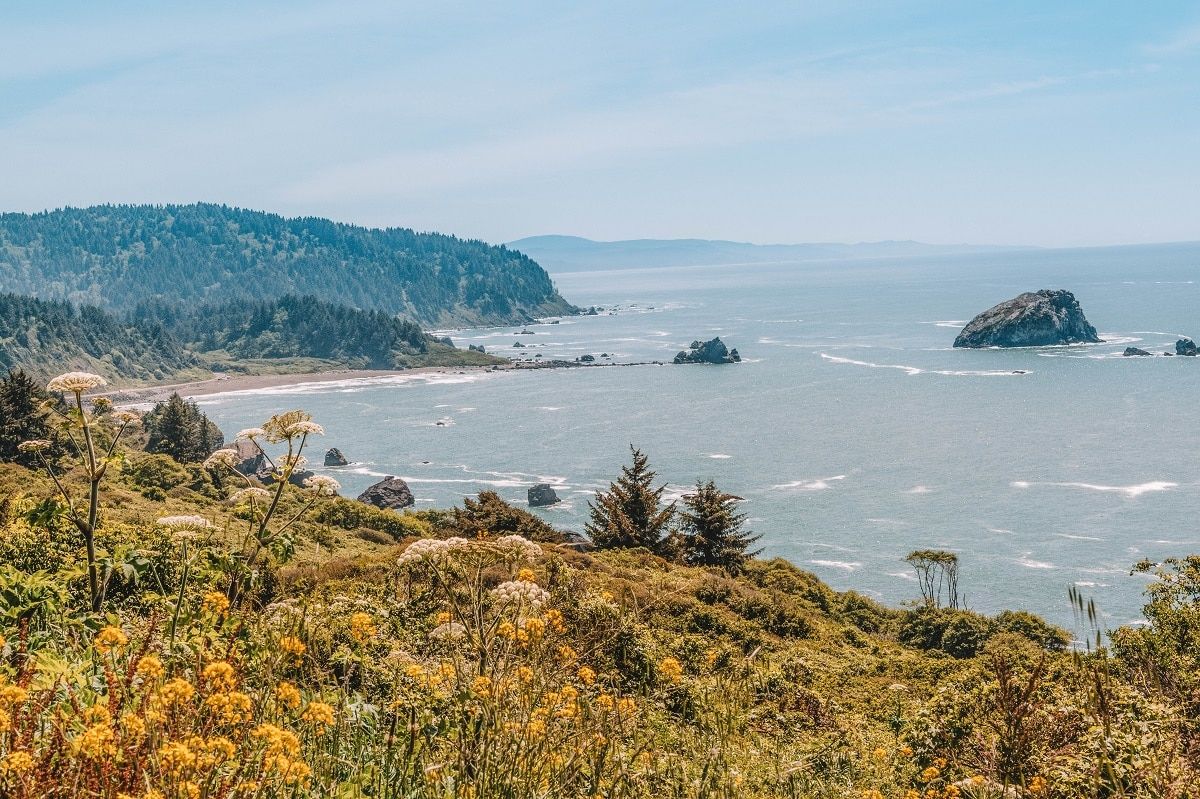
Del Norte Coast State Park is located seven miles south of Crescent City, just off Highway 101. The park has eight miles of rugged coastline, old-growth redwood groves, and mixed forest.
Much of the park was significantly logged throughout the 20th century. Although the park was established in 1927, it wasn’t until 2002 that California State Parks was able to buy the upper portion of Mill Creek from the logging company.
Most of the old trees in this area are now gone, but the Park Service is embarking on a restoration project to bring back redwoods and re-establish the habitats of local wildlife.
You can find out more about the ongoing work at Mill Creek Day Area on the east side of the park.
Although loggers destroyed many of the old trees in this park, there are some really beautiful parts to see.
The dramatic-sounding Damnation Creek Trail leads through redwood forests to some spectacular cliffs.
And if you’re visiting in May, look out for brightly colored rhododendrons massed around the base of towering redwoods.
Del Norte Coast Redwoods State Park also has the largest campground of the four redwood parks: Mill Creek. It’s a great place to camp, with private sites tucked between ferns and under towering redwoods.
If you’re looking for a hotel, Crescent City is a ten-minute drive from the park’s entrance, so this would be the best town to find accommodation.
Jedediah Smith Redwoods State Park
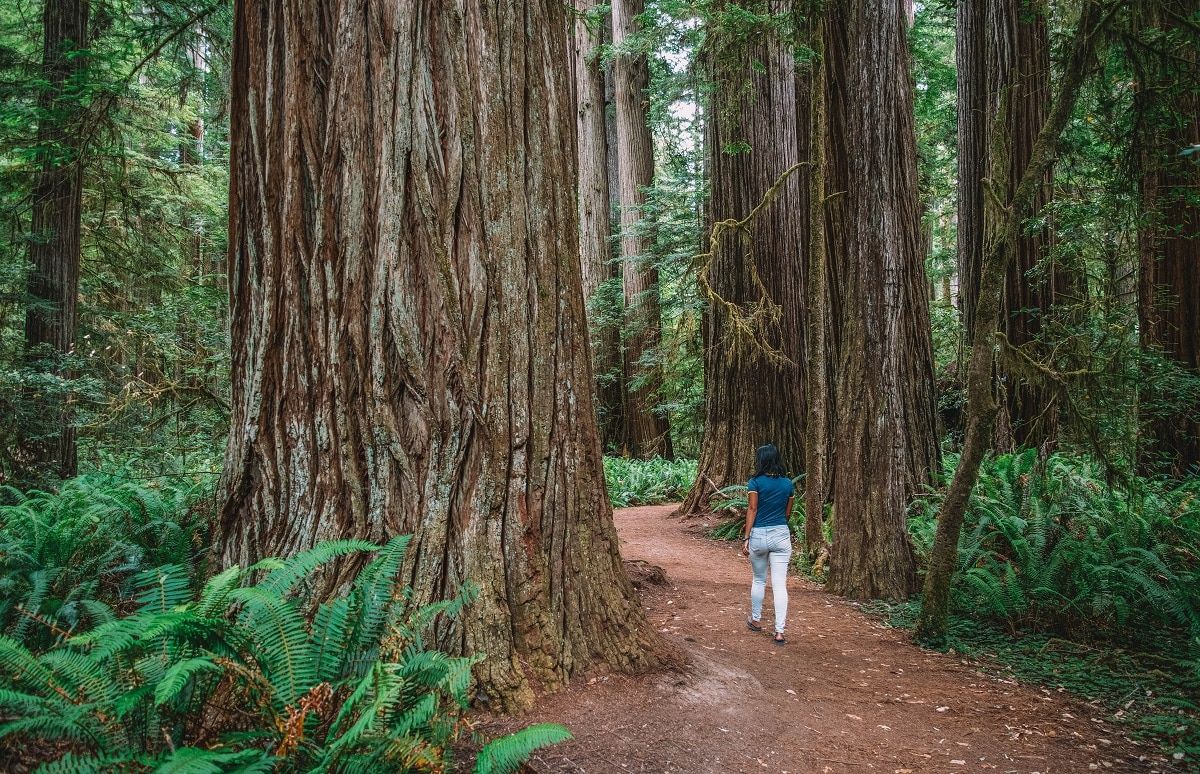
Jedediah Smith Redwoods State Park is located nine miles east of Crescent City on Highway 199. Highlights of the park include a 1,300-foot-long boardwalk through the Grove of Titans.
This brand new trail was created to protect the sensitive forest floor, which was in danger of being damaged by hikers seeking out the grove.
The location of these ancient, enormous trees was known by indigenous people in the area but kept secret for thousands of years until researchers stumbled across it in 1998.
Although the researchers declined to reveal the exact location, the secret was out and people made their own paths to find the secret grove, trampling plants and damaging roots in the process.
The National Park Service reacted by building a boardwalk above the forest floor, so everyone can now safely visit this incredible place.
The redwood trees in this park are some of the widest, tallest, and oldest. It’s probably the most undeveloped of the parks and the most scenic.
Before the Grove of Titans boardwalk was opened, there were few easy trails in the park, but plenty of interesting hikes for intrepid explorers.
In addition to the Grove of Titans, you can walk the Boy Scout Tree Trail, go for a drive on Howland Hill Road, and visit Little Bald Hills.
Jedediah Smith Redwoods State Park has a campground suitable for tents, trailers, and RVs.
The Hiouchi Motel is the closest hotel to the park. Plus, Crescent City is conveniently located just five minutes away from the park’s entrance, so you can easily use the coastal town as your base.
Best Hikes in Redwood National Park
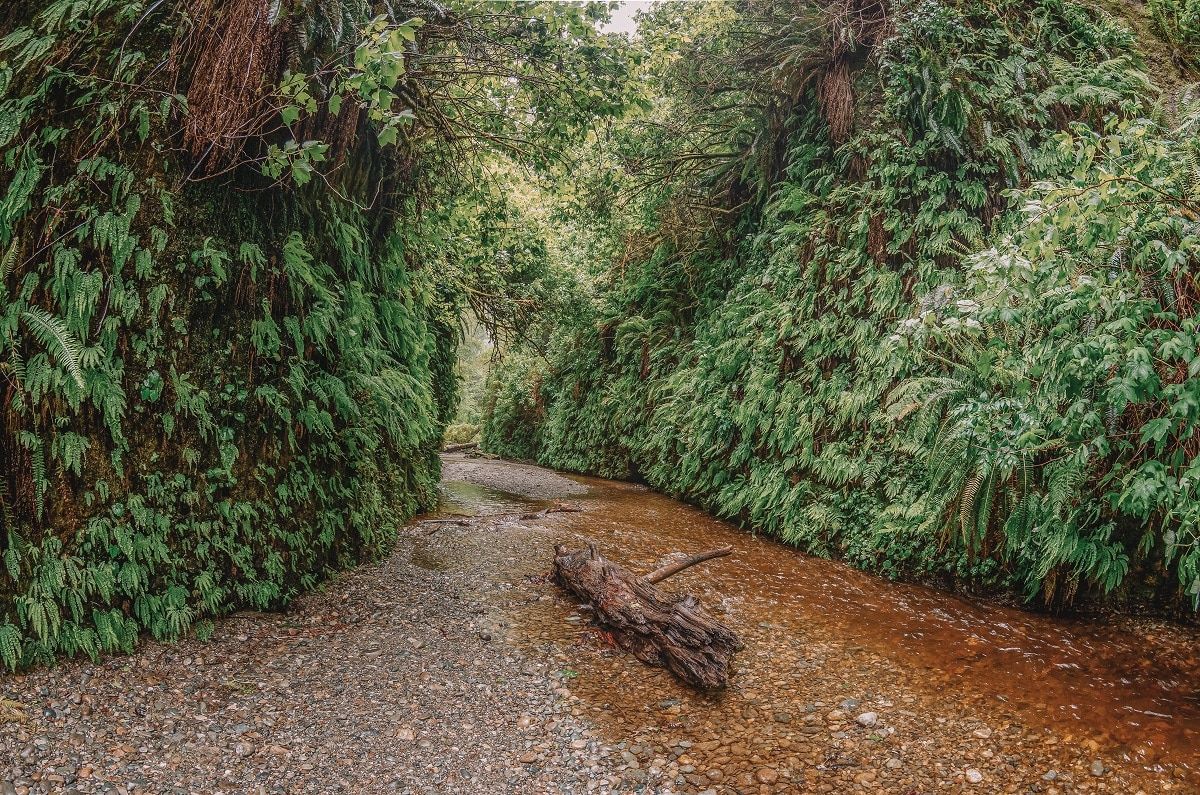
This is the most popular long-distance day-hike in Prairie Creek State Park, which takes you the long way around to Fern Canyon. If you can’t get a permit for Fern Canyon, this is an alternative route you can use to get there.
This short trail in Prairie Creek State Park takes you to see some of the park’s tallest trees. It’s an ideal introduction to the area and perfect for kids or those short on time.
This 4.5-mile, backcountry trail in Redwood National Park leads to a grove that once contained the world’s tallest tree before it lost its crown and was demoted.
This is a popular hike through a sensitive area, so a permit is required. Only 50 are issued per day, so don’t sleep on this if you want to hit the Tall Trees Trail.
This easy one-mile loop starts at the end of Davison Road in Prairie Creek Redwoods State Park and winds through a 50-foot, fern-covered canyon. You’ll need a permit to visit in the summer, which you can get online.
Located in Jedediah State Park, this is a strenuous, five-mile out-and-back hike through groves of huge redwoods. The Boy Scout Tree itself is remarkable for its 23-foot width, created when two trees fused together.
This easy, one-mile loop is located in Redwood National Park at the top of a ridge, giving you views over the forest canopy below.
If you’re visiting between May and September, look out for colorful rhododendrons along the trail.
Backpacking Redwood National Park
There are seven backcountry camping sites, plus dispersed camping is allowed on Redwood Creek’s gravel bar, past the first creek crossing (upstream of McArthur Creek). A free backcountry permit is required.
Redwood National and State Parks has more than 200 miles of backcountry trails, including the popular Tall Trees Trail, but you’ll need to snag a permit in advance.
If you want to do multi-day hiking through the parks, the Coastal Trail is the best option.
Stretching out over 70 miles along the coastline, the path passes through Prairie Creek Redwoods State Park, Del Norte Coast Redwoods State Park, and Redwood National Park.
Top Things to do in Redwood National Park Besides Hiking
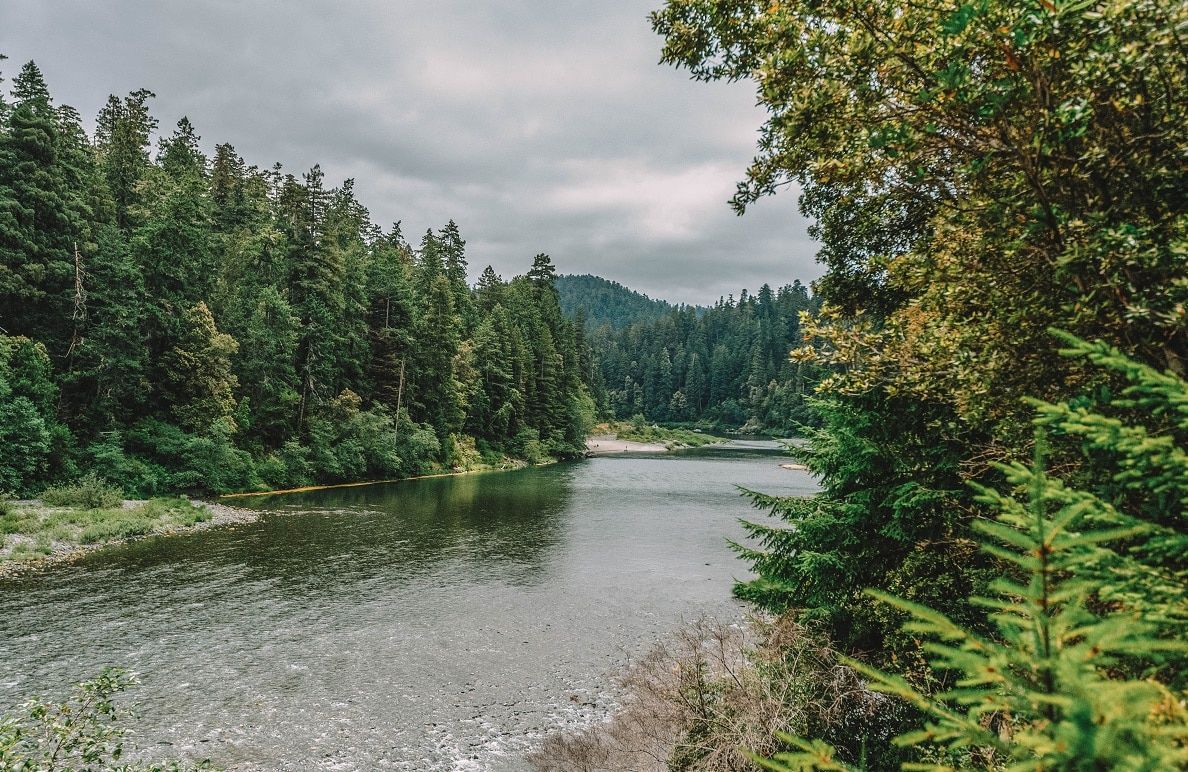
Hiking is a popular activity in the parks, but there are more things to do in Redwood National Park besides going for a walk.
Go horseback riding
Many of the trails are equestrian-friendly. Guided tours are available from Redwood Creek Buckarettes Horseback Rides in Orick.
Raft the river
Kayak the Smith River, the largest free-flowing river system in California, either on a ranger-led summer tour or with a local guide.
Take a ranger tour
Rangers lead free tours throughout the summer season, showcasing the park’s history, culture, and natural beauty.
Explore the tidepools
Gold Bluffs Beach has some excellent tide pools, where you can explore an oceanic microcosm without getting your feet wet.
Watch dancing demonstrations
Indigenous communities still live within the park and are heavily involved in its preservation. If you’re lucky, you might catch a dance performance from tribe members in the summer.
Slow down on a scenic drive
There are several scenic drives you can take through the park where you can slow down and appreciate the forest from your car.
Newton B. Drury Scenic Parkway is the easiest to access. You can find it just off Highway 101, in Prairie Creek Redwoods State Park.
Check out a visitor center
There are five Redwood National Park visitor centers in the parks, all with information and exhibits on the redwoods. Thomas H. Kuchel Visitor Center, a mile south of Orick, is the largest.
Where to Eat & Drink in & Near Redwood National Park
There are no restaurants or food vendors inside the parks.
You’ll need to buy your snacks from towns outside the park boundaries and bring them with you as you explore Redwood National Park.
- Shoreline Market, Orick – Local store selling fresh produce, perfect for stocking up on picnic supplies.
- Edebee’s Snack Shack, Orick – This small diner is perfect for lunch – check out the Elk Burger!
- The Log Cabin Diner, Klamath – Cozy all-day breakfast spot with filling dishes to fuel your adventures.
- North Coast Co-op, Arcata – Get a fresh cup of coffee from the espresso bar, a pastry from the bakery, and a sandwich from the deli for later.
- The Historic Requa Inn, Klamath – Enjoy dinner at this upscale bed and breakfast overlooking the Klamath River.
- North Town Coffee, Arcata – Spice up your latte with one of North Town Coffee’s creative drinks, like the popular Super Shroom Mocha.
Where to Stay in Redwood National Park
Camping in Redwood National Park
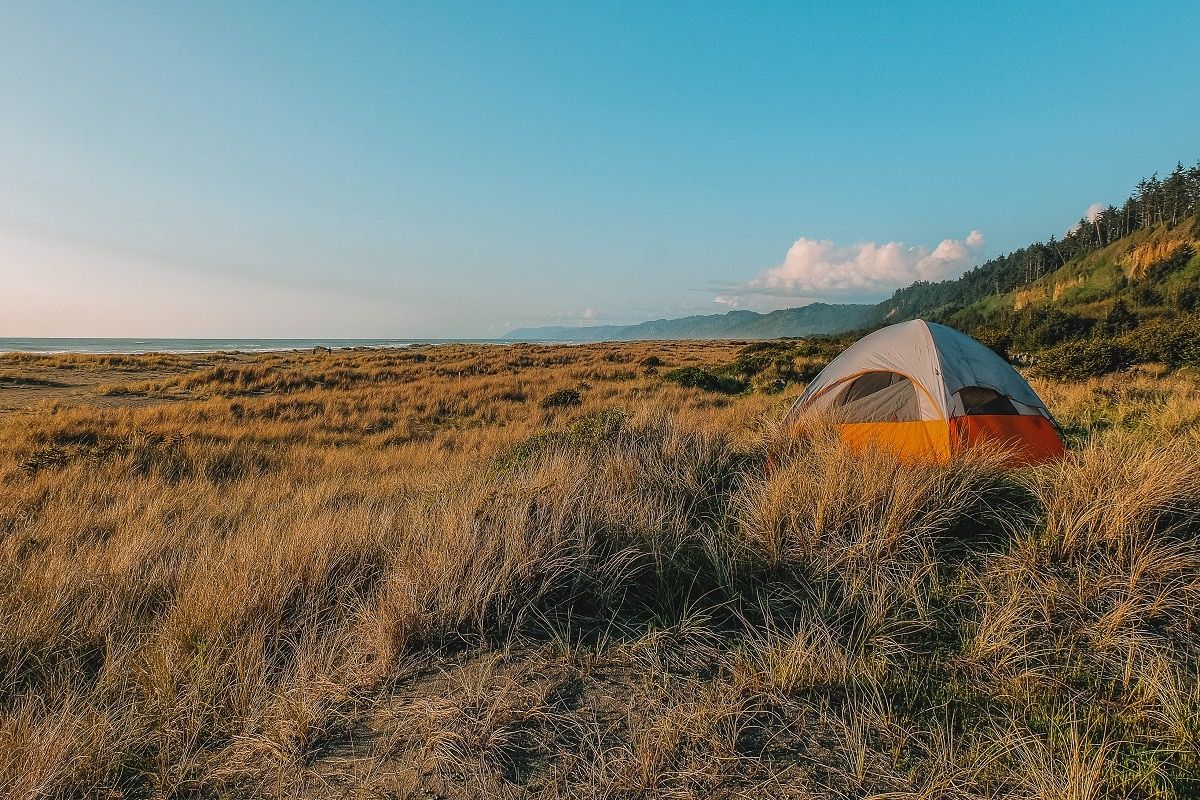
Camping is the only way to stay overnight in the park. There are four developed campgrounds: Jedediah Smith, Mill Creek, Elk Prairie, and Gold Bluffs Beach.
All of these sites allow RVs, tents, or trailers, except for Gold Bluffs Beach. RV hook-ups aren’t available, however.
Gold Bluffs Beach Campground and Elk Prairie Campgrounds are reservable year-round, through Reserve America.
You can book a site at Jedediah Smith Campground in the summer between May 1 and October 1. Mill Creek is operated on a first-come, first-served basis.
There are also a limited number of basic cabins available in the parks if you want to camp but don’t have all the equipment. Whatever you pick, book six months in advance, especially for summer weekends.
Best Tent Campsites in Redwood National Park
The four developed campgrounds are Jedediah Smith Campground, Mill Creek Campground, Elk Prairie Campground, and Gold Bluffs Beach Campground.
Showers and restrooms are available at these campgrounds. Each site has a parking spot, fire pit, picnic bench, and bear box.
Gold Bluffs Beach Campground
Gold Bluffs Beach Campground is right on the beach, next to the Pacific Ocean. You have to drive down Davison Road to access this campground. It’s a narrow route unsuited to large vehicles.
Set in the dunes behind the beach, you’ll get more sunshine here but also a lot of wind, which can be annoying if your tent is flapping about at night. No potable water is available at this campground.
Mill Creek
Mill Creek is the largest campground and is dotted with pines, firs, and enormous stumps of redwoods from its logging days. Although the campground is large, campsites have a private feel to them.
Elk Prairie Campground
Elk Prairie Campground is conveniently located in the center of the parks. You’re in a meadow, not a dense forest, so there are beautiful views of the night sky available.
Elk roam this area, so you should get to see a few of these majestic animals during your stay. There’s no water available at this campground.
Jedediah Smith Campground
Jedediah Smith Campground, in the northernmost state park, is your best venue if you want to sleep under towering redwoods.
The beautiful Smith River also flows by the camp. The downside to this campground is the noise from Highway 199, which runs nearby.
In addition to these sites, there are seven undeveloped campgrounds: Little Bald Hills Camp, DeMartin Camp, Flint Ridge, Gold Bluffs Beach, Elam Camp, 44 Camp, and Redwood Creek Gravel Bar.
These are all hike-in campgrounds with primitive facilities, like a composting toilet.
Best Cabin Rentals in Redwood National Park
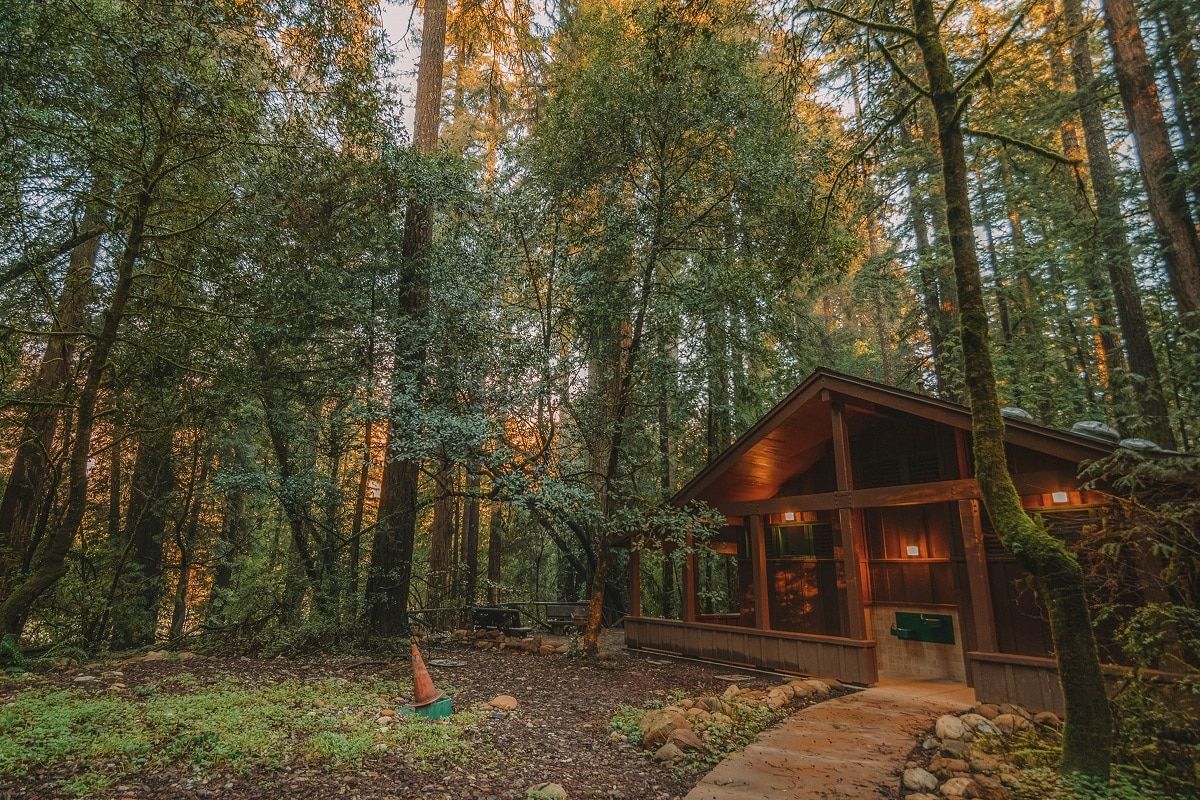
There are eight ADA-accessible Redwood National Park cabins: four in the Elk Prairie Campground and four in the Jedediah Smith Campground.
The cabins have heating and electricity, making them a good alternative to tent camping in the winter.
This Redwood National Park lodging option is pretty basic, however.
You get two sets of bunk beds, with a double on the bottom. No mattress pads or bedding are provided, so you will need to bring your own. Outside, you’ll find a barbecue, fire pit, bear box, and picnic bench.
Just like the campsites, you’ll need to book a cabin months in advance – I would strongly recommend making a reservation as soon as the dates are released, six months in advance.
Best RV Campsites in Redwood National Park
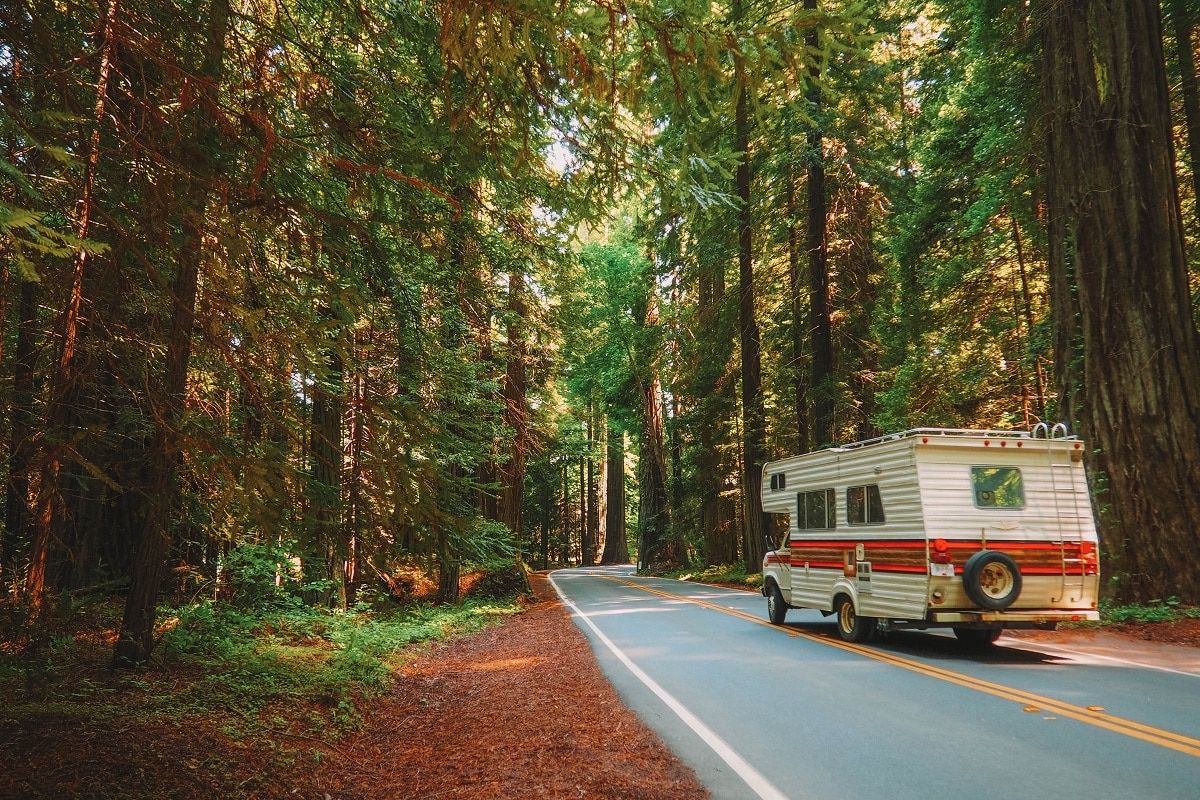
Jedediah Smith, Mill Creek, Elk Prairie, and Gold Bluffs Beach are all good for RVs, although Gold Bluffs Beach has a 24’ long, 8’ wide limit on all vehicles and does not allow trailers.
These campgrounds were developed in the 1940s, so there are no hook-ups anywhere in Redwood National Park.
Free Camping in Redwood National Park
Redwood Creek Gravel Bar allows for dispersed camping along the gravel bar. It’s free, although you will need a free permit to camp here. There are no facilities, so you’ll need to take everything you need with you.
Also, don’t forget to take an animal-proof container for your food. Otherwise, critters (or bears) will absolutely swing by to steal your snacks.
Best Hotels Near Redwood National Park
- Holiday Inn, Klamath – Comfortable, clean, central location, and great value for money. Breakfast is included. Klamath is located between Prairie Creek Redwoods State Park and Del Norte Coast Redwoods State Park.
- Hotel Arcata, Arcata – This hotel is listed on the National Register of Historic Places and is located in the center of Arcata. It’s a charming hotel with a ton of character. Arcata is located to the south of Redwood National Park.
- Hiouchi Motel, Crescent City – Hiouchi Motel offers comfortable accommodation with an on-site restaurant and is conveniently located next to Jedediah Smith State Park. You’ll be surrounded by redwood forests in this secluded spot.
Best Vacation Rentals Near Redwood National Park
- Meadowview – This sweet two-bedroom, two-bathroom home in Klamath is close to the parks and has a beautiful view of the meadow.
- Requa House – If you’re looking for more space, this Klamath cabin sleeps up to six people. You’ll get ocean and redwood forest views, lots of privacy, plus a hot tub.
- Logan’s Landing – Relax in this three-bedroom, three-bathroom cottage with a wraparound deck in Orick.
Best Time to Visit Redwood National Park
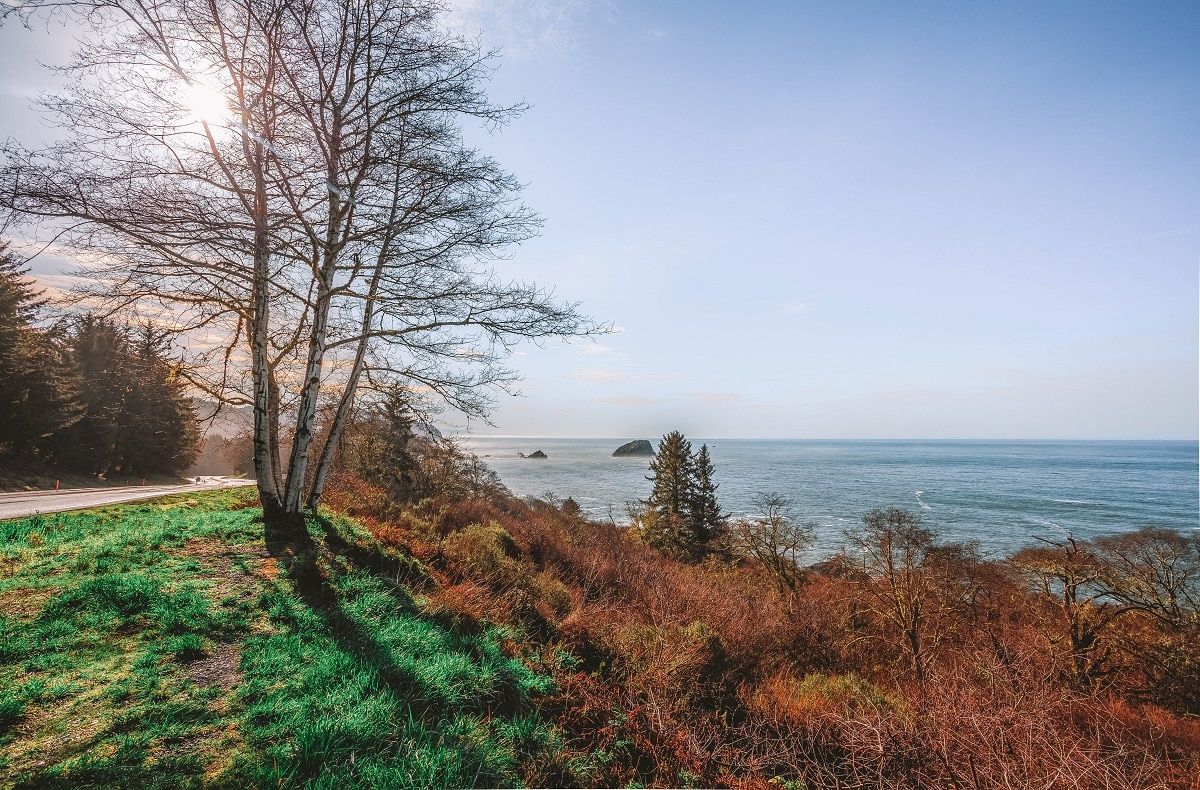
Redwood National Park is beautiful all year round. In spring, you’ll get a lot of rain, but also lush meadows and wildflower-covered hills. If you want to see the colorful native rhododendrons, it’s best to visit in May.
Summer is the most popular time of year to visit when the weather is warmer and drier, making hiking conditions more comfortable.
However, you’ll also get more crowds: half of the parks’ annual visitors arrive in June, July, and August.
Fall is my favorite time to visit the Northern California coastline. The crowds and the fog melts away, leaving quiet, sunny trails.
However, there’s also an increased danger of fire. October is officially peak wildfire season in California, although it sadly seems to get earlier every year.
Winter brings the rain. Redwood National Park receives between 60 and 80 inches of rain a year, mostly between November and May.
Some trails will be too muddy to attempt and seasonal bridges are removed from streams. However, you’ll have the forest to yourself, which is a nice upside.
Tips for Visiting Redwood National Park
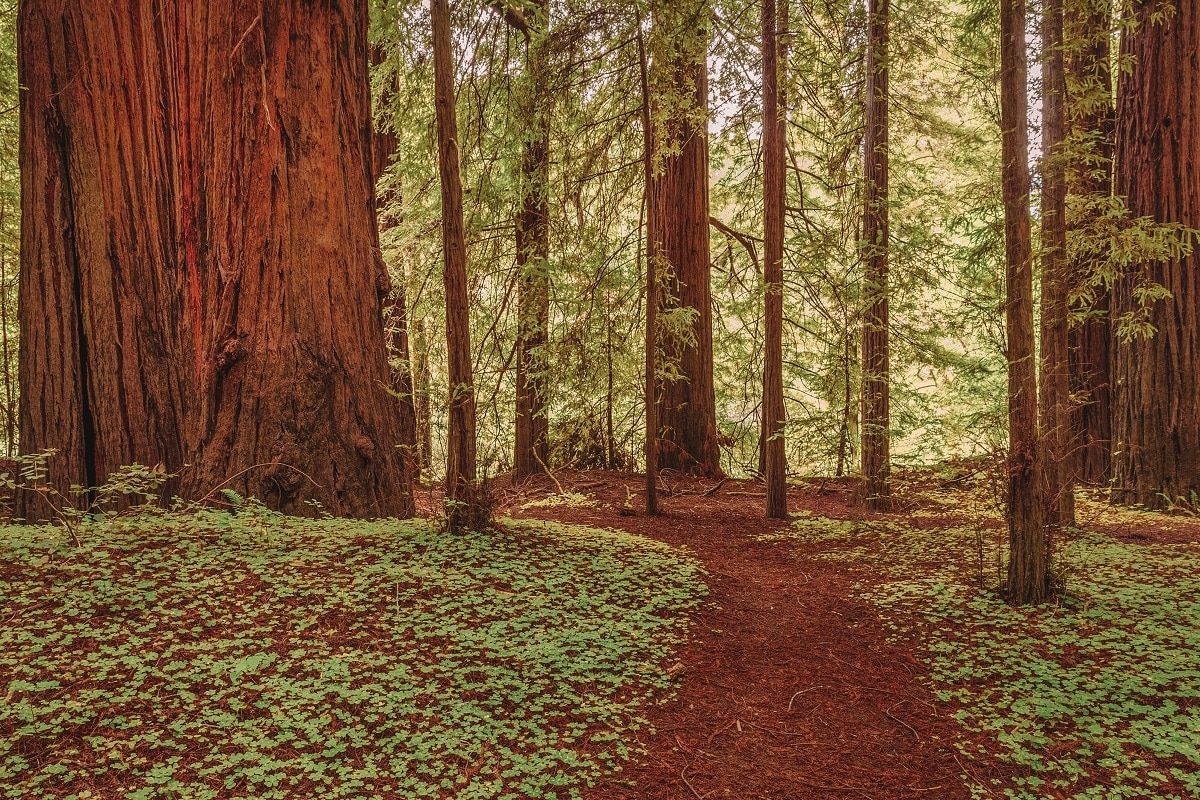
- With four parks to visit, it makes sense to buy an America the Beautiful Pass, which gets you into all federal lands for one year. You can get these online or at REI. Don’t forget your permits too, as some popular areas require reservations. Permits are free and available online.
- Go on a ranger-led tour. Check out the schedule at the visitor centers for the events calendar and take part in a campfire program, nature walk, or Junior Ranger activity for more fun Redwood National Park facts.
- Plan a picnic. There are no restaurants in the park, so take all the snacks and water you will need for a day visiting Redwood National Park. The nearest cities from south to north are Arcata, Orick, Klamath, and Crescent City.
- Download maps ahead of time. Cell reception in the park is spotty, so don’t rely on your phone for directions. Download maps when you have WiFi or use a map from the visitor center. It’s also a good idea to download your favorite hiking app and trails ahead of time.
- Dress for fog and rain. This is a rainforest, so Redwood National Park weather is often wet. Make sure you pack a light waterproof jacket and waterproof hiking shoes.
- Fill up on gas before heading into the park. As with snacks, there are few gas stations outside the cities. Arcata in the south and Crescent City in the north are the best places to find gas.
Looking for more redwoods? Read our guide to the best redwoods near San Francisco.
What to Pack for Redwood National Park
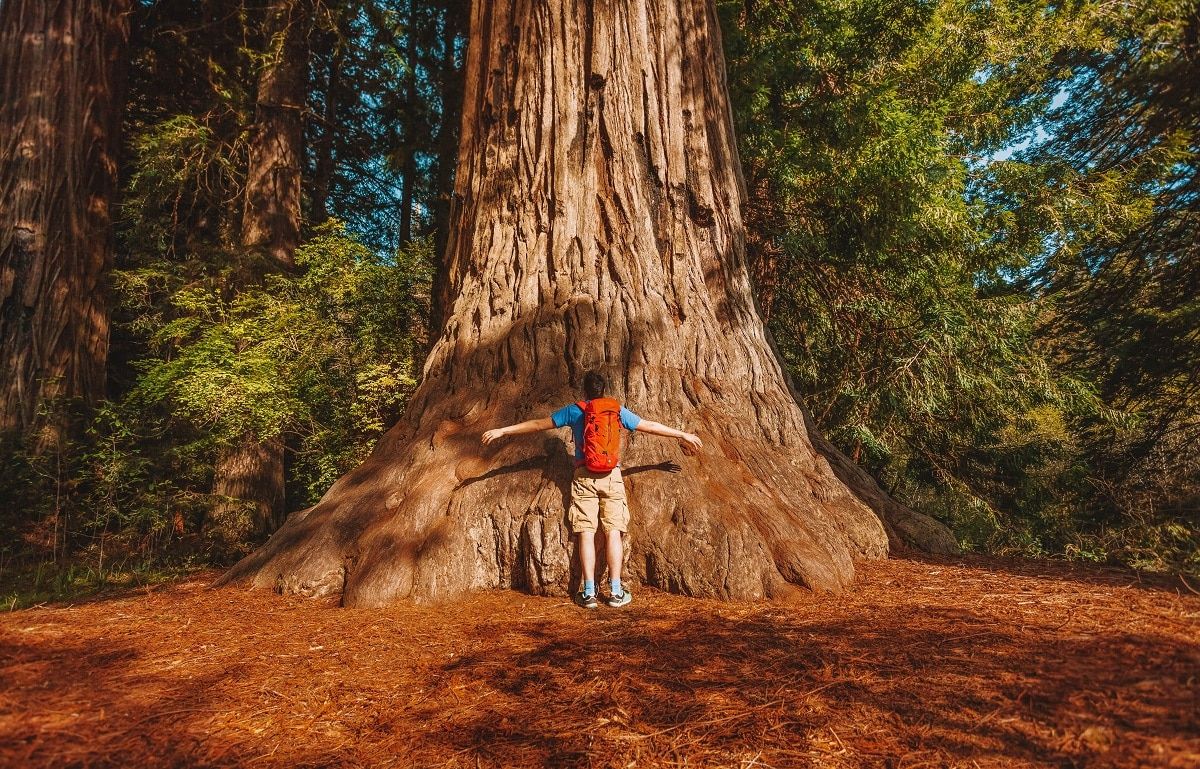
- Hiking boots or trail running shoes
- Two liters of water per adult
- Hiking backpack with a hydration bladder
- Breathable hiking clothes
- Hiking Snacks
- Hat for hiking
- Sunscreen
- Sunglasses
- Light jacket
- Long pants and hiking socks
- Downloaded hiking app
- Outdoor watch (like a Garmin watch)
- Map
- Compass
- Cash or credit card for parking
- Bug spray
- Durable phone case
- America the Beautiful Pass
- National Park Passport
- First-aid kit
- Travel insurance

Sarah McDonald
Sarah McDonald is a travel writer based in the Bay Area. She writes for the national parenting website Red Tricycle and on her own family travel blog, Tiny Trailblazers. She loves exploring California’s outdoors and has a weakness for a national park gift shop.
Sarah enjoys sharing her Bay Area expertise with readers curious to try popular restaurants and off-the-beaten-path adventures in California. When she’s not writing reviews and travel guides, you’ll likely find her trying to keep up with her kids on a hiking trail or deciphering the menu at a new restaurant.
Looking for more Northern California and national park travel inspiration? Read our related articles below!
Best Campgrounds in Northern California
Things to do in Death Valley National Park
How to Get from San Francisco to Yosemite National Park
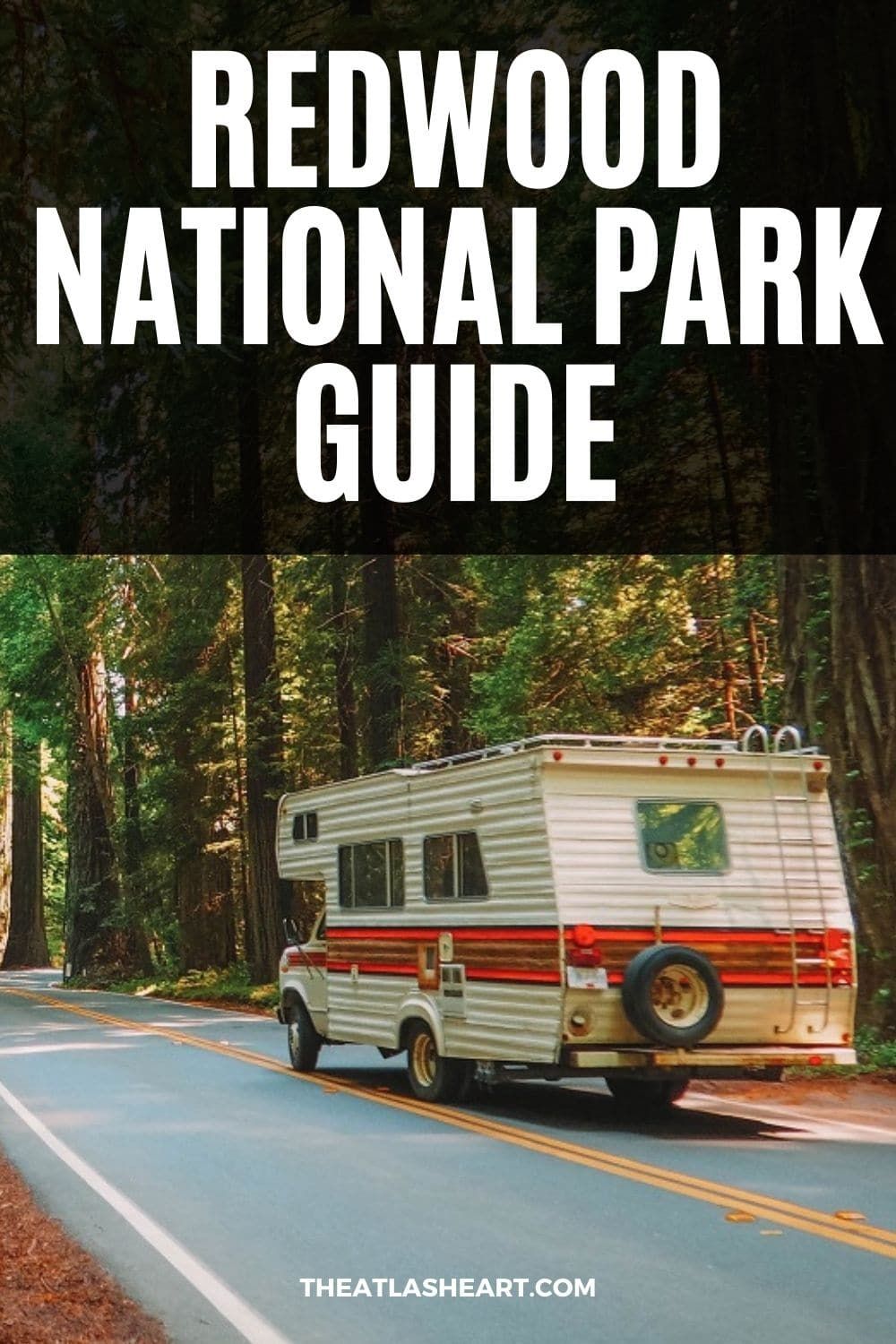
Pin this image for future reference

